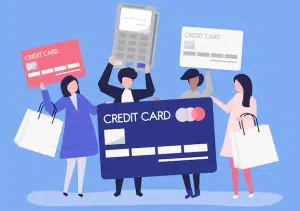Personal lines of credit are one of the most flexible product of the credit market which can be very useful if utilized properly. In the USA, for instance, people take advantage of these credit lines to finance most of their personal needs – some of which are emergent while others are planned. In this blog post, I will show you how you can use them properly and wisely to improve your financial status.
Before proceeding any further, let me explain what, in fact, a personal line of credit means. In essence it is an open credit from a financial institution by which funds may be borrowed up to a credit limit. Unlike conventional loan products, you do not get access to the agreed amount all at once. You, instead are able to raise funding from this line only when necessary with accrual of interest only on the borrowed amount.
Understanding personal lines of credit

The credit lines applied to the personal position should be regarded as a definite useful financial instrument if utilized correctly. They are more flexible in terms of funds since you never have to borrow a large sum of money unlike in a commercial loan where you will borrow a lump sum and you will have to pay in installments together with the interest. This makes them suitable to finance any surprise incident or any reason that may arise and compel an individual to spend some cash.
Immense interest is that there is only interest charged on the amount that is borrowed. Option providers covenants can hopefully reduce your expanses in relation to other forms of credit in which you have to pay interest for the full loan amount from the start. The interest rates of the personal line of credit are usually lower that credit card which makes it more attractive.
However, you need to beware of the terms that are given with the credit line. Such may include annual fees, interest charges, and the terms of repayment among other things. Getting acquainted with such components will assist you in making correct decisions concerning borrowing and repayment and, therefore, escaping probable debt.
Establishing a personal line of credit
The first thing that you need to do to be granted a personal line of credit is to a apply from a bank or a credit union. Do your homework and be ready to disclose your personal financial status including the income, credit history and existing debts. This in assists the lender determine your credit worthiness and the extent of credit that you are capable of getting.
After the approval of your application, the bank will then determine your credit limit out of the abovementioned factors. This new instrument must be approached responsibly… Borrow what is sufficient enough to cater for your needs, and ensure that you pay back as soon as possible to avoid many charges eating into your cash.
There are some circumstances such as when you may consider consulting a financial planner. They are capable of giving individual advice based on the customer’s financial capability in order to assist him or her in making the right decision in terms of usage and amount of the personal line of credit. Bear in mind that we strive to make this tool as useful for you as possible without causing any damage to your wallet.
Utilizing your line of credit
When you have the credit line, be wise and appropriate on how you go about borrowing. Personal lines of credit are ideally suited for short-term requirements, or in an instances of an emergency rather than for long-term financing. For example, if your car needs an unplanned repair or you fall ill, this credit facility can be useful to seek without pressurising your pocket immediately.
Nonetheless, it is wise not to use personal lines of credit for financing the frivolities or for the lifestyle that you cannot otherwise afford. Such utilization of your credit line can result in heavy indebtedness and large financial pressures. As with the use of credit, one should always seek to borrow with a plan of how he or she is going to repay in order to avoid the need to repeatedly rollover the loan.
Also, monitoring of expenses should be made to avoid exceeding the credit limits which have been put in place. Beyond your ability to repay, the danger of over-borrowing is that besides the accrued interest you may be charged a penalty or your credit rating drops. Responsible borrowing behaviour, shall ensure that you do not sustain any serious financial losses and at the same time please your lenders.
